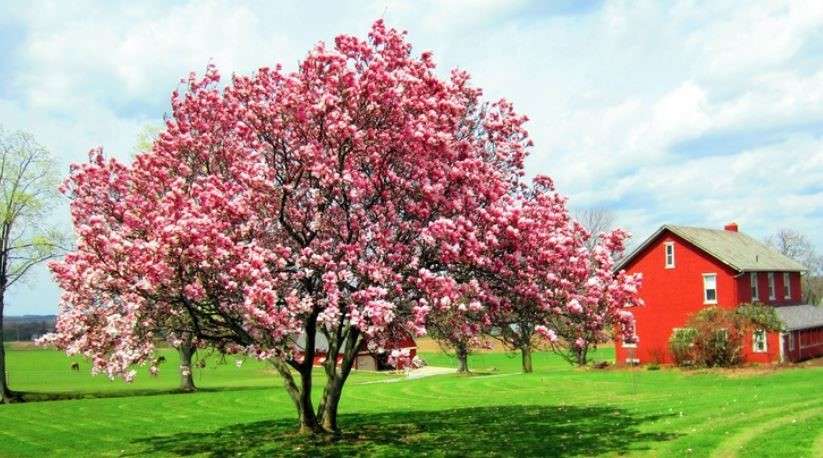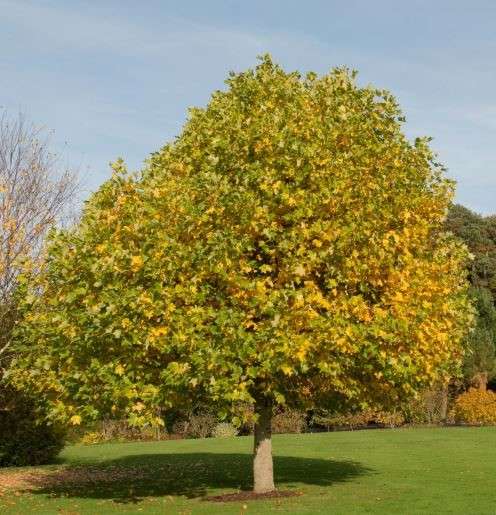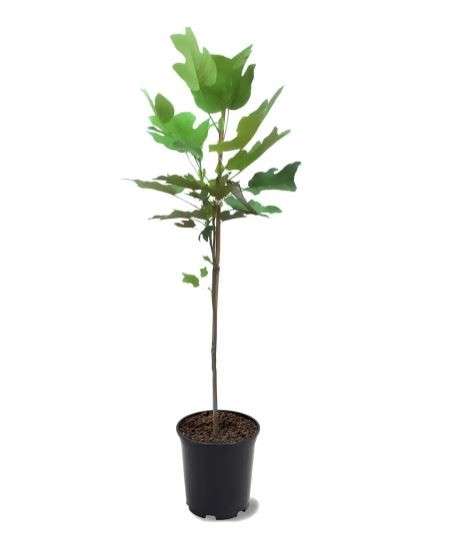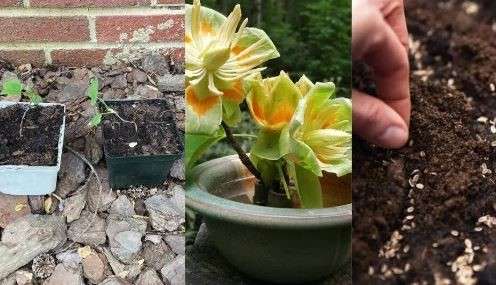
Transform Your Outdoor Space with a Gorgeous and Enchanting Tulip Tree Garden
If you’ve been looking for a way to enhance the beauty of your outdoor space, a tulip tree garden might be just the thing you need. In this article, we’ll dive into the allure of a tulip tree garden and provide tips on how to transform your outdoor space with this stunning and enchanting addition. We’ll also discuss the best ways to care for and maintain a tulip tree garden, so you can enjoy its beauty for years to come. Whether you’re a seasoned gardener or just starting out, creating a tulip tree garden can bring a touch of elegance and charm to your outdoor oasis.
Table of Contents
ToggleThe Beauty of Tulip Trees

A. Description of tulip trees (Liriodendron tulipifera)
Tulip trees, also known as Liriodendron tulipifera, are native to Eastern North America and are known for their stunning beauty. These trees can grow up to 90 feet tall and are characterized by their large, vibrant green leaves and beautiful tulip-shaped flowers. The flowers are a vibrant yellow color with a touch of orange at the base, making them a truly eye-catching addition to any garden. Tulip trees are also known for their tall, straight trunks and attractive pyramidal shape, making them a striking focal point in any outdoor space. These trees are also fast-growing, so you can enjoy their beauty relatively quickly after planting. With their unique and beautiful appearance, a tulip tree garden can bring a touch of elegance and charm to any outdoor space.
B. Unique characteristics and appeal of tulip trees
Tulip trees are a stunning addition to any garden. These trees can grow up to 90 feet tall and are known for their vibrant green leaves and beautiful tulip-shaped flowers in a vibrant yellow color with a touch of orange at the base, making them a truly eye-catching addition to any garden. Their tall, straight trunks and attractive pyramidal shape make them a striking focal point in any outdoor space. Additionally, tulip trees are fast-growing, so you can enjoy their beauty relatively quickly after planting. With their unique and beautiful appearance, a tulip tree garden can bring a touch of elegance and charm to any outdoor space.
C. Cultural and historical significance
Tulip trees hold a special place in American history and culture. In fact, they are the state tree of Indiana, Kentucky, and Tennessee. The Native American Cherokee tribe also used the wood from tulip trees to make canoes, showcasing their practical importance in history. With their rich cultural and historical significance, planting a tulip tree garden can also add a sense of heritage and tradition to your outdoor space. Whether you’re looking to create a peaceful retreat, a vibrant gathering space, or simply add an enchanting touch to your landscape, a tulip tree garden is a beautiful and meaningful addition to any outdoor setting.
Planning Your Tulip Tree Garden

A. Choosing the right location for your garden
Choosing the right location is crucial for the success of your tulip tree garden. Tulip trees thrive in full sun and well-drained soil, so be sure to pick a spot in your yard that meets these requirements. Take into account the size of the mature tree and make sure there is enough space for it to grow and flourish. Additionally, consider the overall aesthetic of your outdoor space and how the tulip tree will complement your existing landscape. With proper planning and care, you can create a stunning and enchanting tulip tree garden that will bring beauty and appeal to your outdoor space for years to come.
B. Design considerations and layout ideas
Are important when planning a tulip tree garden. Consider the overall aesthetic of your outdoor space and how the tulip tree will complement your existing landscape. You may want to create a focal point with the tulip tree as the centerpiece, or incorporate it into a larger garden design. Plan the layout of your garden to ensure the tulip tree has enough space to grow and flourish. You can also consider adding other plants, flowers, or shrubs to enhance the beauty of your garden. With careful planning and consideration of design elements, you can create a beautiful and enchanting tulip tree garden that will bring joy and appeal to your outdoor space.
C.Selecting companion plants for your tulip trees
Can enhance the beauty and appeal of your garden. When choosing companion plants, consider the overall aesthetic you want to achieve and the specific needs of the tulip tree. You can choose plants that complement the color and shape of the tulip tree’s flowers or foliage, or plants that provide contrasting textures and heights to create visual interest. Additionally, consider the growing conditions of your garden, such as sunlight and soil type, to ensure that the companion plants will thrive alongside the tulip tree. By carefully selecting companion plants, you can create a cohesive and visually stunning garden that highlights the beauty of your tulip tree.
Planting and Caring for Tulip Trees

A. Selecting healthy tulip tree specimens
Selecting a healthy tulip tree is crucial to ensuring the success of your garden. When choosing tulip trees for your garden, look for plants with strong, healthy stems and vibrant green leaves. Avoid trees with discolored or damaged leaves, as these may indicate underlying health issues. It’s also important to consider the size and shape of the tree, as well as its potential growth habits. Choose trees that are suited to the size and layout of your garden, and consider any potential maintenance requirements, such as pruning or shaping. By selecting healthy and well-suited tulip tree specimens, you can ensure that your garden will thrive and bring lasting beauty to your outdoor space.
B. Best practices for planting tulip trees
Best practices for planting tulip trees are essential for ensuring the success and longevity of your garden. When planting tulip trees, it’s important to choose a location that offers plenty of sunlight and well-drained soil. Tulip trees thrive in full sun and require nutrient-rich, well-draining soil to thrive. Before planting, be sure to prepare the soil by loosening it and incorporating organic matter to improve its fertility and drainage. When it comes to planting the trees, dig a hole that is just as deep as the root ball and twice as wide. Gently place the tree in the hole, making sure the top of the root ball is level with the soil surface. Backfill the hole with soil, water the tree thoroughly, and apply a layer of mulch to help retain moisture and suppress weeds. It’s also important to water the tree regularly, especially during its first year of growth, to help establish a strong root system. By following these best practices for planting tulip trees, you can create a stunning and enchanting garden that will bring beauty and appeal to your outdoor space for years to come.
C. Watering, fertilizing, and mulching tips

When it comes to watering your tulip tree garden, it’s important to water regularly, especially during its first year of growth, to help establish a strong root system. Make sure to water deeply, allowing the water to penetrate the soil and reach the roots. Avoid overwatering, as this can lead to root rot and other issues. In terms of fertilizing, you can use a balanced, slow-release fertilizer in the spring to provide nutrients for healthy growth. Additionally, applying a layer of mulch around the base of the tree can help retain moisture, suppress weeds, and keep the soil cool. Be sure to keep the mulch a few inches away from the trunk to prevent rotting. By following these tips for watering, fertilizing, and mulching, you can ensure that your tulip tree garden thrives and continues to bring beauty and appeal to your outdoor space for years to come.
Enhancing Your Tulip Tree Garden
A. Adding decorative elements and accents
Your tulip tree garden can enhance its beauty and appeal. Consider adding a bench or seating area under the tree so you can relax and enjoy the stunning surroundings. You can also incorporate decorative lighting to highlight the tree’s natural beauty and create a magical atmosphere in the evenings. Additionally, planting complementary flowers and shrubs around the base of the tree can add color and texture to the garden. Think about using pots and planters to create a layered look and add visual interest to the space. With thoughtful design and attention to detail, you can transform your outdoor space into a captivating and enchanting area that showcases the beauty of your tulip tree garden.
B. Creating wildlife-friendly features
Your tulip tree garden can help to attract beneficial insects and pollinators, as well as provide a habitat for birds and other wildlife. Consider adding a bird feeder or bird bath near the tree to encourage birds to visit and make your garden their home. You can also incorporate native plants and flowers that provide food and shelter for wildlife. Additionally, creating a small pond or water feature can attract frogs, dragonflies, and other beneficial creatures to your garden. By creating a diverse and wildlife-friendly environment, you can enhance the natural beauty of your tulip tree garden while also supporting the local ecosystem.
C. Seasonal maintenance and care
Maintenance and care are important for keeping your tulip tree garden looking beautiful and healthy. In the spring, be sure to remove any dead or diseased branches and apply a slow-release fertilizer to promote healthy growth and vibrant blooms. During the summer, water your tulip tree garden regularly, especially during dry periods, to ensure that the soil remains consistently moist. In the fall, remove any fallen leaves and debris to prevent diseases and pests from taking hold. Additionally, consider mulching around the base of the tree to help retain moisture and protect the roots during the winter months. By staying on top of seasonal maintenance and care, you can ensure that your tulip tree garden thrives and continues to bring beauty and enchantment to your outdoor space year after year.
The Allure of Tulip Tree Blossoms
A. Description of tulip tree flowers
The tulip tree is known for its stunning and enchanting blossoms. The flowers are large and showy, resembling tulips with their distinct shape and vibrant colors. They typically bloom in the spring, adding a burst of color to any outdoor space. The tulip tree flowers are not only beautiful but also attract pollinators like bees and butterflies, making them a beneficial addition to any garden. With their unique and eye-catching appearance, the tulip tree flowers can truly transform your outdoor space and create a picturesque and captivating landscape.
B. Blooming season and duration
The blooming season for tulip tree flowers typically occurs in the spring and can last for several weeks. The exact timing of the bloom will depend on your specific climate and location. It’s important to note that once the flowers have bloomed, they will eventually fall off and create a blanket of petals on the ground, adding to the beauty of your garden. To ensure that your tulip tree garden continues to thrive, it’s essential to provide the proper care and maintenance throughout the year. By doing so, you can enjoy the stunning and enchanting blossoms of the tulip tree for years to come.
C.Tips for preserving and enjoying cut tulip tree flowers indoors
To preserve and enjoy cut tulip tree flowers indoors, you can follow a few simple steps. First, cut the flowers in the morning when they are at their freshest. Next, place the cut stems in a vase filled with water and add a floral preservative to keep the flowers fresh for a longer period of time. Change the water every few days and trim the stems at an angle to help the flowers last even longer. Display your cut tulip tree flowers in a cool area away from direct sunlight to help them stay fresh and vibrant. With these tips, you can bring the beauty of your tulip tree garden indoors and enjoy the stunning blossoms for as long as possible.
Benefits of Creating a Tulip Tree Garden
A. Environmental benefits of tulip trees
Tulip trees offer various environmental benefits, making them a great addition to any garden. These trees are known for their ability to attract pollinators such as bees and butterflies, which helps support local ecosystems. Additionally, tulip trees can provide shade and help cool the surrounding area, making them a valuable asset for reducing energy costs and improving air quality. Their large, vibrant flowers also add beauty and elegance to any outdoor space. In addition to their visual appeal, tulip trees also offer ecological value by providing food and habitat for wildlife. Overall, creating a tulip tree garden can have positive impacts on the environment and enhance the beauty of your outdoor space.
B. Health and well-being advantages of spending time in nature
Include reduced stress levels, improved mood, and increased physical activity. By creating a beautiful and serene tulip tree garden, you can create a peaceful outdoor space that encourages relaxation and rejuvenation. Spending time in nature has been shown to lower cortisol levels and reduce feelings of anxiety and depression. Additionally, being outdoors can increase physical activity, which is beneficial for overall health and well-being. Whether you’re enjoying the vibrant blooms of the tulip tree or simply sitting in the shade of its branches, spending time in a peaceful garden setting can have a positive impact on your mental and physical health. By creating a tulip tree garden, you can reap the environmental benefits of these stunning trees while also enhancing your own well-being.
Overcoming Challenges and Pitfalls
A.Common problems and issues with tulip tree cultivation
Include the susceptibility to aphids, scale insects, and tulip tree leaf mining weevils. These pests can cause damage to the tree and affect its overall health. In addition, tulip trees are also prone to certain diseases such as verticillium wilt and powdery mildew. It’s important to regularly inspect the tree for signs of pests and diseases and take appropriate measures to address any issues. Furthermore, tulip trees can be sensitive to environmental stressors such as drought and compacted soil, so it’s essential to provide proper care and maintenance to ensure the tree’s health and vitality. Overall, creating a tulip tree garden can have positive impacts on the environment and enhance the beauty of your outdoor space.
B. Strategies for dealing with pests and diseases
Include regular monitoring and inspection of the tree for signs of pests or diseases. If you notice any issues, consider using natural remedies such as insecticidal soaps or horticultural oils to control pests like aphids and scale insects. For diseases, ensure the tree has proper air circulation and sunlight, and consider pruning and removing infected parts to prevent the spread of diseases like powdery mildew and verticillium wilt. Additionally, maintaining proper soil moisture levels and providing adequate nutrients can help the tree resist environmental stressors and remain healthy. Consulting with a professional arborist or horticulturist can also provide valuable guidance on managing pests and diseases in your tulip tree garden. By taking these proactive measures, you can create a thriving and visually stunning tulip tree garden in your outdoor space.
In conclusion, adding a tulip tree garden to your outdoor space can bring a touch of natural beauty and enchantment to your home. With the right care and maintenance, you can create a stunning and inviting garden that will be a joy to behold. By following these tips and incorporating the beauty of tulip trees into your outdoor space, you can create a serene and captivating environment for you and your guests to enjoy.
Frequently Asked Questions
A tulip tree garden is a beautiful outdoor space filled with tulip trees, which are known for their stunning and vibrant flowers.
To create a tulip tree garden, you will need to plant tulip tree saplings in a suitable outdoor location with well-draining soil and ample sunlight. You can also add other plants and flowers to complement the tulip trees and create a lush and enchanting garden.
The best time to plant tulip trees is in the early spring or late fall, when the weather is cool and the trees can establish their roots before the hot summer months
Tulip trees require regular watering, especially during dry periods, and occasional fertilization to promote healthy growth and vibrant blooms. It’s also important to prune the trees as needed to maintain their shape and remove any dead or damaged branches.
Tulip trees thrive in temperate climates with well-defined seasons, so they may not be suitable for extremely hot or cold regions. It’s best to check with a local gardening expert to determine if tulip trees will thrive in your specific climate.
While tulip trees do require regular care and maintenance, they are relatively low-maintenance compared to some other types of trees and can be a stunning addition to any outdoor space.
Tulip trees typically start blooming when they are around 15 to 20 years old, so it may take some time for a newly planted tulip tree garden to reach its full blooming potential.
Absolutely! You can enhance your tulip tree garden with additional features such as pathways, seating areas, decorative accents, and other plants and flowers to create a truly enchanting outdoor oasis.
